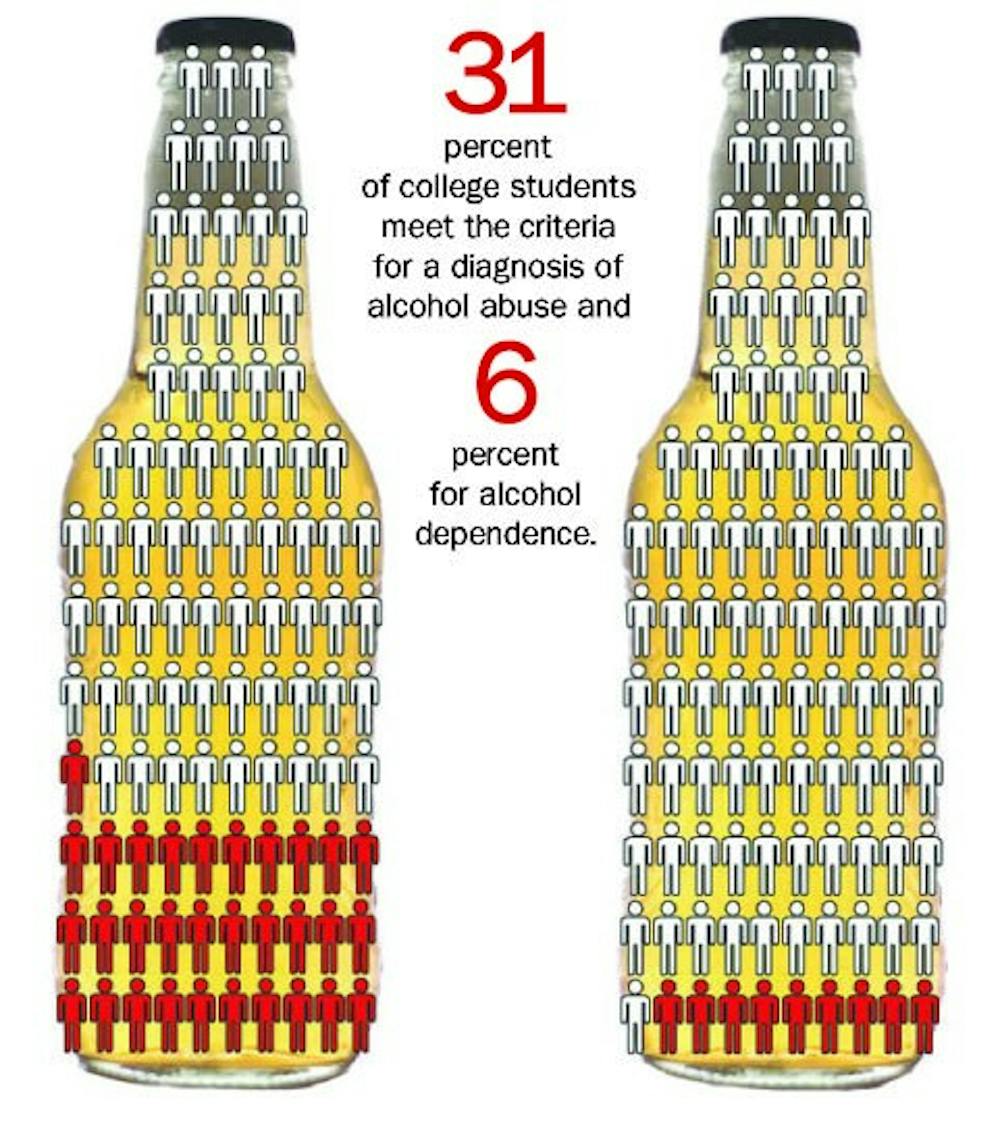Drinking Drain: Alcoholism may be a bigger problem on college campuses than some students think
Is consuming alcohol part of the average student’s college experience?
Cassopolis junior Ryan Kealy thinks so.
“I think it’s just more of a social thing, it’s just to have fun with your friends after a tough week,” he said. “A lot of kids are working and going to school and their plates are pretty full, so it’s nice to go out and have fun on the weekends.”
•Death - 1,825 students die each year from alcohol-related unintentional injuries.
•Injury - 599,000 students are unintentionally injured while intoxicated.
•Assault - 696,000 students are assaulted by an intoxicated student.
•Sexual abuse - 97,000 students are victims of alcohol-related sexual assault or date rape.
•Unprotected sex - 400,000 students report unprotected sex, more than 100,000 report being too intoxicated to know if they consented to sex.
•Academic problems - 25 percent of students report adverse academic affects due to drinking.
•Drunk driving - about 3.3 million students drive under the influence of alcohol.
Additionally, alcohol consumption is responsible for a variety of adverse side effects, including an increase in injury, assault, sexual abuse and suicide attempts, according to the website.
“Anybody who consumes alcohol for too long is going to become an addict,” said Katie Ballinger, owner and executive director of Addiction Solutions Counseling Center, 218 S. Washington St.. “It’s unrealistic to think that kids aren’t going to drink, but you have to monitor. That’s what our society doesn’t do, we don’t monitor at all. At least do it responsibly and, hopefully, don’t harm yourself or others.”
Please, drink responsibly
Kealy said he and his friends enjoy drinking fairly regularly, in some cases up to three or four nights in a week. But he does not let his party habits affect his class work.
Most students are responsible with alcohol, Kealy said, and still go to classes after a hard night of drinking.
“I have not seen a lot of kids fail out because of drinking, but I see a lot of kids that don’t do well because they’re lazy and blame it on drinking,” he said. “I think it’s just part of college life.”
According to the website, 25 percent of college students report academic consequences from their drinking habits, including missing class and poor study habits.
More than 3.3 million college students between ages 18 and 24 drive under the influence of alcohol and about 1,825 students between those ages die a year from unintentional alcohol-related injuries, including motor vehicle crashes.
Kealy said students don’t have a lot to do in Mount Pleasant and combat their boredom with alcohol.
Though it is probably true that students tend to drink more during their years in college than they will after graduation, Kealy said the stereotype that all college students are drunks is an unfair label.
“I think eventually you just grow out of it, I think your priorities change,” he said. “I think we drink a little more during our college years than we will eventually. I don’t think it’s a good stereotype for college kids — there are thousands that go out drinking and stuff but still do well in school.”
Signs of a problem
Ballinger said nearly half of her clients each year are college-age adults who suffer from substance abuse issues, including alcohol abuse.
Many students don’t know when to quit drinking, Ballinger said, which can lead to immediate problems including unprotected sex and alcohol poisoning.
Lori Wangberg, a health educator for University Health Services, said in an e-mailed statement that alcohol poisoning occurs when the liver cannot process alcohol as fast as the rate of its consumption.
Signs of alcohol poisoning include slow or irregular breathing, low body temperature, bluish skin color and an inability to be awakened, she said.
“Because alcohol is a central nervous system depressant, it slows down vital functions, such as breathing and body temperature,” Wangberg said. “Other effects are impaired judgment and coordination. It is important to remember that blood alcohol concentration continues to rise for a period of time even after the person has stopped drinking.”
Wangberg said women feel the effects of alcohol sooner than men because females have less of the enzyme responsible for breaking down alcohol and have less water in their bodies compared to men.
If you are unsure of whether you have a drinking problem, Ballinger said there are a few signs to look for.
“If they have an increased tolerance, if they drink more than they intend to or if they’re not able to quit drinking, or if drinking is taking up too much of their time,” she said. “Those would be good signs for college kids.”
Goodrich junior Emily Fischer said she and her friends drink responsibly, consuming alcohol once a week, and sometimes not at all.
“I drink socially or for special occasions,” she said. “If I have a chance to just relax, we might go to a bar and watch a game or something.”
Most students drink because it is fun and socially acceptable, she said, but they will grow out of their party habits eventually.
“I feel with some people it’s a phase,” Fischer said. I think most of the time, as you get older, you become more responsible — like when you’re underage and you drink, you kind of skip class and don’t do everything you should, but you learn from that.”




